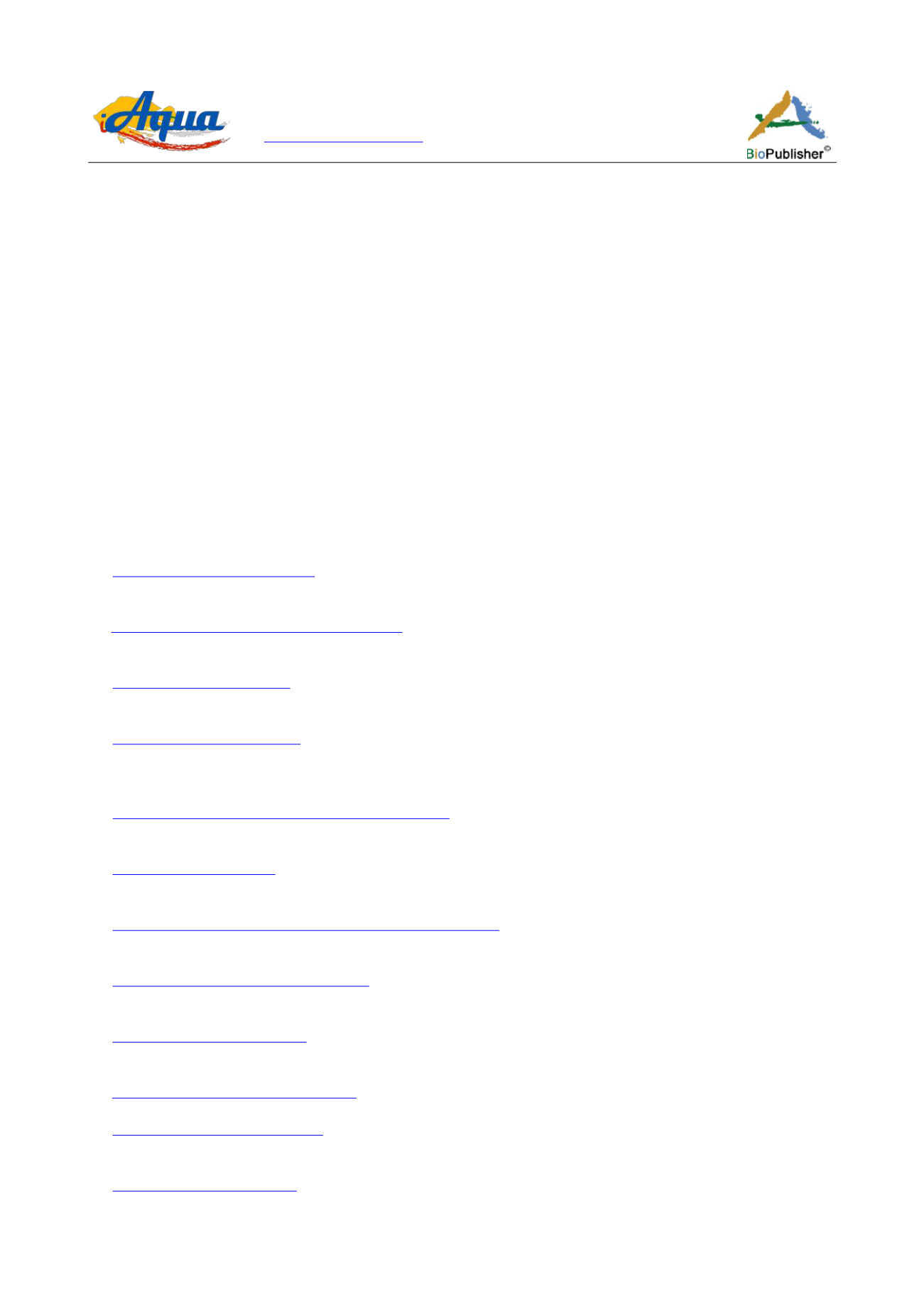
International Journal of Aquaculture, 2017, Vol.7, No.17, 112-121
119
5 Conclusion
This experiment showed that the doses of 600 g/m
3
, 1200 g/m
3
and 1500 g/m
3
in rabbit manure provided very
good zooplankton productions. Nevertheless, the doses of 1200 g/m
3
and 1500 g/m
3
could provoke eutrophication
of the culture area. For an optimal production of zooplankton, the dose of 600 g/m
3
in rabbit manure offering the
best conditions for zooplankton production could constitute the optimal dose of dry rabbit manure to be proposed
in controlled area. Being aware that of the major challenges in fish farming is the feeding at different growth
stages, it could be suggested the possibility to adopt different doses of rabbit manure as a function of the
individual height of zooplankton to be produced in majority. Unfortunately, with almost the different doses
applied, it was noted that rotifers were predominant in abundance.
Acknowledgements
We express our gratitude to the Ministry for the Higher Education and Scientific Research of Benin, which set up the project
“support at PhD student” in which this study of research was made. We thank, Azon M.T. Césaire for her contribution to this work,
particularly in data collection. The authors thank also the reviewers for their contribution in improve the scientist quality of this
manuscript.
References
Adande R., Bokossa H.K.J., Liady M.N.D., and Fiogbe E.D., 2017, Valorization of various sources of rabbit manure in agro-piscicultural system in Benin
(West Africa): dynamics and effect of mineralization upon quality of fresh water, International Journal of Recycling of Organic Waste in Agriculture, 6(3):
233-243
Adande R., and Fiogbe E.D., 2015, Utilisation des fertilisants organiques d'origine animale et végétale pour le développement de la pisciculture dans les étangs:
Synthèse bibliographique, International Journal of Multidisciplinary Research and Development, 2 (12): 281-287
Agadjihouèdé H., Bonou A.C., Montchowui E., and Laleye P., 2011, Recherche de la dose optimale de fiente de volaille pour la production spécifique de
zooplancton à des fins piscicoles, Cahiers Agricultures, 20(4): 247-260
Agadjihouèdé H., Bonou C.A., Chikou A., and Lalèyè P., 2010, Production comparée de zooplancton en bassins fertilisés avec la fiente de volaille et la bouse
de vache, International Journal of Biological and Chemical Sciences, 4(2): 432-442
Agadjihouede H., Montchowui E., Montcho S.A., Bonou C.A., and Laleye P.A., 2014, Growth and development of three species of the zooplankton
(Brachionus Calyciflorus, Moina micrura and Thermocyclops sp.) breeding on poultry dropping in mixed condition in tanks, International Journal of
Fisheries and Aquatic Studies, 2(1): 189-196
Akodogbo H.H., Bonou C.A., and Fiogbe E.D., 2014, Effect of pig dung fertilizer on zooplankton production, Journal of Applied Biosciences, 84(1):
7665-7673
Akodogbo H.H., Bonou C.A., Adandé R., Sossou D.S., and Fiogbé E.D., 2015, Optimization of zooplankton production from pig dung optimal dose: renewed
medium, Agricultural advances, 4(2): 15-21
Ara K., 2001, Length-weight relationships and chemical content of the planktonic copepods in the Cananéia Lagoon estuarine system, Sao Paulo, Brazil,
Plankton Biol. Ecol, 48(2): 121-127
Arimoro, F., 2007, First feeding in the African Catfish
Clarias anguillaris
fry in tanks with the freshwater rotifer
Brachionus calyciflorus
cultured in a
continuous feed back mechanism in comparison with a mixed zooplankton diet, Journal of Fisheries and Aquatic Science, 2(4), 275-284
Awaïss A., Kestemont K. and Micha J.-C., 1992, Nutritional suitability of the Rotifer
Brachionus calyciflorus
Pallas for rearing freshwater fish larvae, Journal
Applied Ichthyolology, 8: 263-270
Barbe J., Schlumberger O., and Bouretz N., 2000, Evaluation de la production piscicole potentielle des étangs, Ingenieries-EAT, 22: 49-62
Bokossa H.K.J., Saïdou A., Sossoukpe E., Fiogbé D.E., and Kossou D., 2014, Decomposition and Mineralization Effect of Various Sources of Pig Manure on
Water Quality and Nutrients Availability for Agro-Fish System in Benin, Agricultural Sciences, 5(12): 1194-1206


